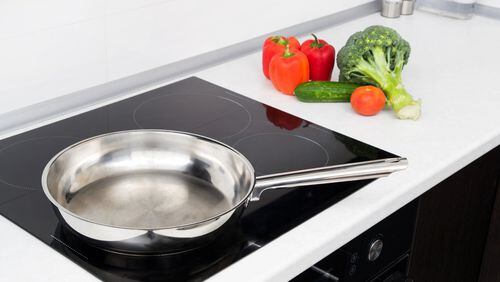As aging in place gains momentum, the tools and tactics for making homes safe and accessible are becoming ever more sophisticated. And manufacturers are responding with a slew of products designed to make homes more accessible for people of all ages and abilities. Here are five enhancements to consider for your home:
1. Slip-resistant flooring
Falls are the leading cause of fatal and non-fatal injuries among seniors. Flooring manufacturers are coming out with more materials that meet the industry standard for slip-resistance (0.42 or higher on the dynamic coefficient of friction, or DCOF). Wood-look porcelain tile is hugely popular in bathrooms and kitchens, the two most dangerous rooms in the house.
Another way to minimize falls in the bathroom is by installing a curbless shower. It’s a significant investment, with an average cost of $3,346, according to HomeAdvisor’s True Cost Guide, but it’s one of the best ways to increase safety and comfort in the home.
2. Safer cooking
Burns from hot stoves are a risk for all homeowners, but especially those with limited mobility. That makes induction cooktops an aging-in-place essential. The technology uses electromagnetism to generate heat, instead of an open flame or coil. And only the cooking vessel gets hot, not the cooktop surface. Best of all, induction burners are incredibly precise, so cooking performance isn’t compromised by the increased safety.
3. Home automation
Smart home technology makes it possible to control lighting, locks, appliances and more with a smart phone or voice-controlled speaker, improving accessibility and ease of living throughout the home. For example, keyless locks are a boon for people with arthritis, and smart lighting and thermostats mean never having to come home to a cold, dark house. Wi-Fi cameras, meanwhile, make it possible for loved ones to check in on aging or infirm relatives.
4. Smart toilets
Toilets with built-in cleansing sprays and air dryers facilitate hygiene for people with limited range (and users of every age agree the experience is pleasant). If you’re not ready for a full toilet replacement, smart seats can be retrofit to any existing toilet. Whichever option you choose, you’ll need a GFCI outlet nearby to power the device; that could add a couple hundred dollars to the project, according to HomeAdvisor’s True Cost Guide.
5. Sleek supports
Even grab bars are evolving, well beyond the institutional versions that defined the early days of aging in place. You can find bars and other supports that double as towel bars, shower shelves and toilet paper holders, all in sculptural designs and luxury finishes. Beautiful sink basins with built-in handles are another helpful option for people with balance challenges.
These attractive supports are one more example of how aging in place is becoming synonymous with smart design. The result is that it’s easier than ever to create a home for all ages without any tradeoff in aesthetic.
———
HomeAdvisor is an online marketplace connecting homeowners with trusted service professionals to complete home projects. Visit HomeAdvisor.com.






